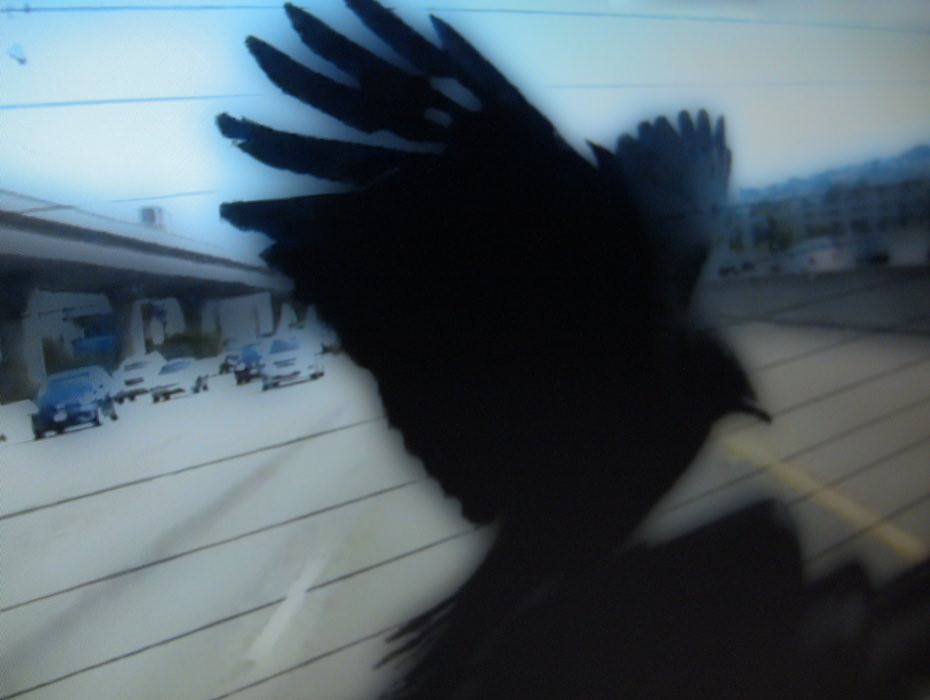Festival of (In)Appropriation #10 (2019)
$12 General Admission
$9 Student/Senior
$7 Member

About
Collage or compilation. Found footage film or recycled cinema. Remix or détournement. Whatever one might call it, the practice of incorporating preexistent media into new artworks engenders novel juxtapositions, new ideas, and latent connotations… often entirely unrelated to the intentions of the original makers. In that regard, such works are truly “inappropriate.” Indeed, the act of (in)appropriation can reveal unimagined relationships between past and present, here and there, intention and subversion, artist and critic, and perhaps even compel us to reexamine what it means to be the “producer” or “consumer” of visual culture itself.
Fortunately for our purposes, the past decades have witnessed the emergence of countless new kinds of audiovisual material available for artistic (in)appropriation. In addition to official state and commercial archives, resources like vernacular collections, home movie repositories, and digital archives now provide the artist with a wealth of fascinating matter to reprocess, repurpose, and endow with new meaning and resonance.
Founded in 2009 and curated by Jaimie Baron, Greg Cohen, and Lauren Berliner, the Festival of (In)appropriation is a yearly showcase of contemporary, short-form, audiovisual works that appropriate existing film, video, or other media and redeploy them in “inappropriate” and inventive ways. This year marks the culmination of the Festival’s first decade, with a program that ranges from militant political documentary, uncanny TV supercuts, and raucous re-mix juggernauts, to quasi-DIY orphan film animations, haunting YouTube mash-ups oozing with existential teen angst, and a brooding digital experiment performed upon a single, black-and-white, still photograph.
The Program:

Identity Parade
by Gerard Freixes Ribera
(Spain, digital video, b/w, sound, 2017, 4:18)
Drew has escaped and is stalking Melinda, but who is hiding behind the mask? Film made by remixing and manipulating archival footage. (Gerard Freixes Ribera)

Nothing a Little Soap and Water Can’t Fix
by Jennifer Proctor
(USA, digital video, color, sound, 2017, 9:15)

Acting Erratically
by Tuff Guts, Hazel Katz, Daniel Goodman
(USA, HD video, color, sound, 2018, 15:08)

Normal Appearances
by Penny Lane
(USA, HD video, color, sound, 2018, 5:00)
“Women watch themselves being looked at.” – John Berger

E
by Anna Malina Zemlianski
(Germany, digital video, sound, color, 2018, 2:21)
This is a found footage animation film. It’s made from approximately 770 laser printed film stills, which were manipulated by hand—drawn upon with pastels and charcoal, torn and collaged—and then scanned and put together into an animation. The film stills were taken from Niklaus Schilling’s Nachtschatten (1972). (Anna Malina Zemlianski)

Only the Dead
by Aaron Valdez
(USA, digital video, color, sound, 2016, 3:45)
A supercut of television’s The First 48. (Aaron Valdez)

derivation of the mean lifetime
by Phoebe Tooke
(USA, digital video, b/w, sound, 2015, 8:40)
A poetic contemplation of the rate of decay and extinction. With subtle and meditative gestures, this film transforms from a still image into a blank canvas. (Phoebe Tooke)

Drive with Persephone
by Mille Feuille
(Canada, HD video, color, sound, 2018, 10:30)
The ancient myth of Persephone’s abduction retold through “drive with me” YouTube Vlogs. (Mille Feuille)

Sand
by Brice Bowman
(USA, 8mm transferred to digital video, color, sound, 2015, 8:48)
In Brice Bowman’s film Sand, the principal issues are the manner and persistence of the sociological collective unconscious being forwarded through time by way of the surviving generations which survive as personal contributions to the collective unconscious. (Brice Bowman)

The Was
by Soda_Jerk
(Australia, HD video, color, sound, 2016, 13:40)
A sample-based video for now, about the time before now. Part experimental film, part music video and concept album, The Was is the collaborative meeting of Australian sample artists Soda_Jerk and The Avalanches. Constructed from over a hundred rotoscoped film samples, The Was is a de/tour de force through the neighborhoods of collective memory.